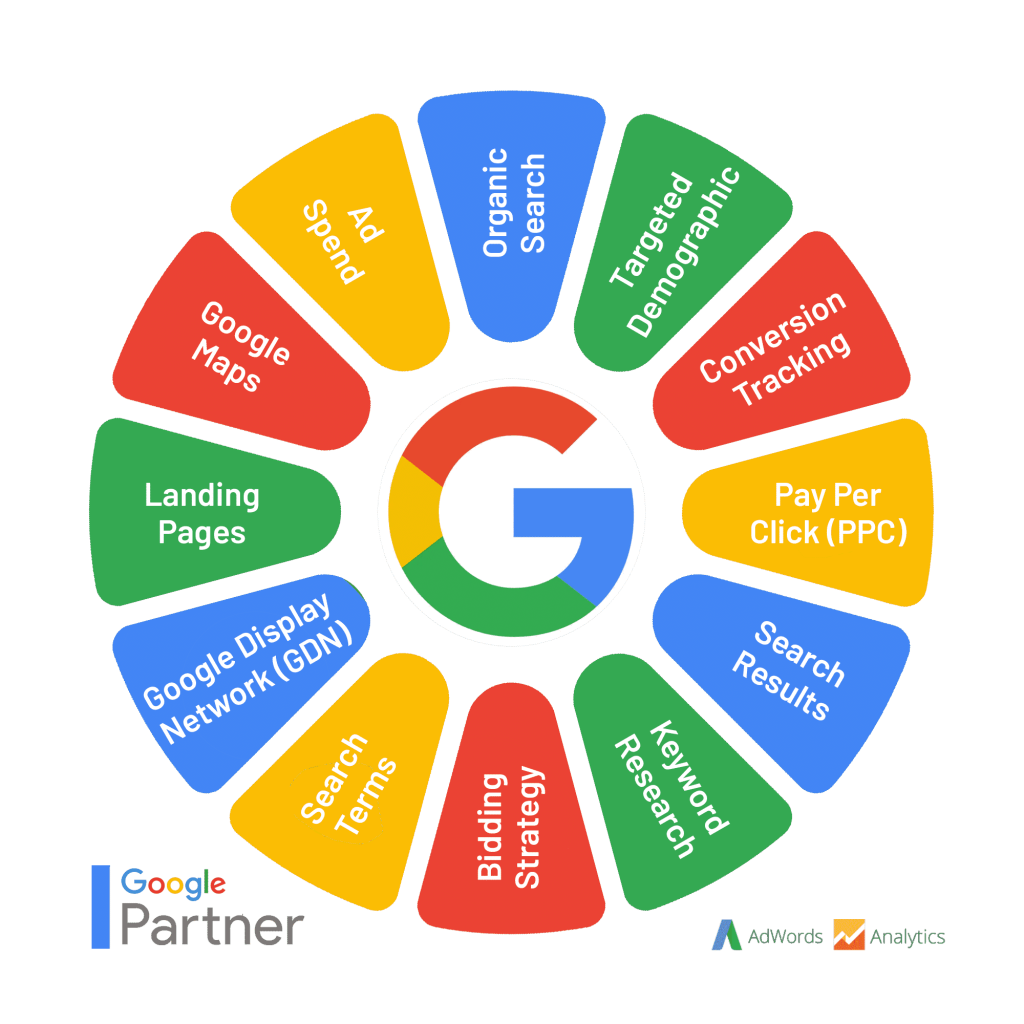
Scaling your Google Ads campaigns is crucial in the dynamic digital landscape. It involves expanding and optimising your campaigns to reach a wider audience, drive conversions, and boost your return on investment (ROI). Scaling allows you to capitalise on campaign success and extend your online presence, establishing your brand as a leader.
Understanding Scaling in the Context of Google Ads
Scaling in Google Ads goes beyond increasing ad spend. It requires a strategic approach to maximise campaign impact while maintaining efficiency. It includes expanding keyword targeting, optimising ad copy, using advanced targeting options, and leveraging data-driven insights. Successful scaling requires a holistic understanding of campaign performance, audience behaviour, and market dynamics.
In this blog, we’ll explore proven strategies to scale Google Ads campaigns effectively. Topics include expanding keyword targeting, optimising ad copy, utilising advanced targeting options like remarketing, leveraging data analysis, and implementing effective bidding and budgeting strategies.
By implementing these strategies, you’ll intelligently scale your Google Ads campaigns and achieve sustainable growth. Stay tuned as we provide actionable insights and real-world examples to help you take your campaigns to new heights.
Understanding Your Current Campaign Performance

Evaluating Key Metrics
To effectively scale your Google Ads campaigns, it’s crucial to evaluate key metrics that provide insights into campaign performance. Start by analysing metrics such as click-through rate (CTR), conversion rate, and cost per acquisition (CPA). CTR indicates the percentage of users who clicked on your ads, while conversion rate measures the proportion of clicks that resulted in desired actions. CPA helps determine the average cost of acquiring a conversion. By assessing these metrics, you can identify areas for improvement and make data-driven decisions
Identifying High-Performing Elements
Next, pinpoint the high-performing elements within your campaigns. Identify keywords, ad groups, and campaigns that have shown consistent success. Look for keywords with high CTRs and conversion rates, indicating their relevance and effectiveness. Similarly, evaluate ad groups and campaigns that have generated a higher number of conversions. By understanding these successful components, you can focus your efforts on scaling them further and allocating resources wisely.
Analysing Audience Targeting and Demographics
Understanding your audience is paramount for scaling campaigns. Analyse audience targeting and demographics data to identify patterns and preferences. Examine which demographics, interests, or locations drive the most conversions. By leveraging this data, you can refine your targeting strategies, tailor ad messaging, and allocate budgets accordingly. Additionally, consider incorporating audience insights into the expansion of your campaigns to reach similar or related audiences.
Through a comprehensive analysis of key metrics, high-performing elements, and audience targeting data, you gain a clearer understanding of your current campaign performance. Armed with these insights, you can make informed decisions when implementing scaling strategies in the subsequent stages of your Google Ads journey.
Expanding Keyword Targeting

Conducting Thorough Keyword Research
To effectively scale your Google Ads campaigns, it’s essential to conduct thorough keyword research. Start by identifying new relevant keywords that align with your business goals and target audience. Utilise keyword research tools and brainstorm potential search terms that users may use when looking for products or services like yours. Consider factors such as search volume, competition, and relevance to ensure you target keywords that have the potential to drive meaningful traffic and conversions.
Utilising Broad Match Modifiers and Phrase Match Keywords
Expanding your keyword targeting can be achieved by utilising broad match modifiers and phrase match keywords. Broad match modifiers allow you to specify certain keywords within a broader search term, ensuring your ads are shown for relevant variations. This approach captures a wider audience while maintaining control over keyword relevance. Similarly, phrase match keywords enable you to target searches containing specific phrases, allowing for more precise targeting while still reaching a broader audience compared to exact match keywords.
Incorporating Long-Tail Keywords
Incorporating long-tail keywords into your campaigns can be highly beneficial for specific targeting and higher conversion rates. Long-tail keywords are more specific and typically have lower search volume but higher intent. They help you connect with users who are further along in their buying journey and have a clear idea of what they are looking for. By incorporating long-tail keywords, you can attract highly relevant traffic that is more likely to convert into customers.
By conducting thorough keyword research, utilising broad match modifiers and phrase match keywords, and incorporating long-tail keywords, you expand your keyword targeting and reach a wider, yet more targeted audience. This approach enables you to capture users at various stages of the buying process and improve your chances of driving higher conversion rates.
Increasing Budgets and Bids

Assessing Campaign Performance for Budget Allocation
When scaling your Google Ads campaigns, it’s important to assess the performance of your existing campaigns to determine how to allocate your budget effectively. Analyse the metrics and outcomes of your campaigns, such as conversion rates, click-through rates, and ROI. Identify campaigns that consistently deliver strong results and allocate a larger portion of your budget to them. By focusing on high-performing campaigns, you can maximise the impact of your increased budget.
Gradually Increasing Daily Budgets
As you scale your campaigns, it’s advisable to gradually increase your daily budgets. This allows for more ad impressions and clicks, giving your campaigns a chance to reach a broader audience. By increasing budgets incrementally, you can monitor the impact on performance and adjust accordingly. Keep a close eye on key metrics, such as conversion rates and cost per acquisition, to ensure your increased budget is generating the desired results.
Adjusting Bids for High-Performing Keywords
To improve ad positioning and visibility, it’s crucial to adjust bids for high-performing keywords. Identify keywords that drive the most conversions and have a strong ROI. Increase bids for these keywords to enhance their ad positioning and increase the likelihood of appearing at the top of search results. By investing more in these high-performing keywords, you can attract more clicks and potentially drive even higher conversion rates.
By assessing campaign performance for budget allocation, gradually increasing daily budgets, and adjusting bids for high-performing keywords, you can effectively scale your Google Ads campaigns. This strategic approach ensures that your increased budget is allocated to the most successful campaigns and keywords, maximising your chances of driving optimal results and achieving your advertising goals.
Testing New Ad Variations

Creating Different Ad Variations
To optimise and scale your Google Ads campaigns, it’s essential to create different ad variations with varying headlines, descriptions, and call-to-actions. Experiment with different messaging approaches, highlighting unique selling points or offers to capture the attention of your target audience. By creating multiple ad variations, you can test which messages resonate best with your audience and refine your ads for maximum effectiveness.
Running A/B Tests
Running A/B tests is a valuable strategy to compare the performance of different ad variations. Divide your audience into two or more groups and expose them to different ad versions simultaneously. Measure and compare key metrics like click-through rates, conversion rates, and engagement. This allows you to identify the best-performing ad variations and make data-driven decisions to optimise your campaigns further.
Implementing Ad Extensions
Ad extensions provide additional information and enhanced visibility for your ads, increasing the likelihood of attracting clicks and improving click-through rates. Consider implementing extensions such as sitelinks, call extensions, location extensions, or structured snippets. These extensions provide additional context, links, or ways for users to interact with your ads, making them more compelling and relevant. Ad extensions can improve your ad rank, increase visibility, and drive higher click-through rates.
By creating different ad variations, running A/B tests, and implementing ad extensions, you can continuously optimise and scale your Google Ads campaigns. These strategies help you refine your messaging, identify high-performing ad variations, and enhance the visibility and effectiveness of your ads, ultimately driving better results for your advertising efforts.
Expanding Targeting Options

Exploring New Audience Targeting Options
To scale your Google Ads campaigns, it’s crucial to explore new audience targeting options beyond the basics. Consider utilising demographics, interests, and behaviours to refine your targeting and reach a more specific audience. Identify key characteristics of your target market, such as age, gender, income level, or specific interests, and incorporate them into your campaign settings. By narrowing down your audience, you can deliver more relevant ads and increase the chances of conversions.
Implementing Remarketing Campaigns
Remarketing campaigns are an effective way to re-engage with previous website visitors who have already shown an interest in your products or services. Implementing remarketing allows you to target these individuals specifically and remind them of your brand, enticing them to return and complete a desired action. By staying top-of-mind with your audience, you can boost conversions and maximise the value of your existing website traffic.
Testing Different Ad Formats
To reach a wider audience, consider testing different ad formats beyond traditional text ads. Explore display ads and video ads to capture attention and engage users visually. Display ads allow you to showcase your products or services with visually appealing images or graphics. Video ads, on the other hand, provide an opportunity to tell a story or demonstrate your offerings. By diversifying your ad formats, you can tap into different user preferences and attract a broader range of potential customers.
By expanding your targeting options, implementing remarketing campaigns, and testing different ad formats, you can broaden your reach and scale your Google Ads campaigns effectively. These strategies allow you to target specific audiences, re-engage with previous visitors, and leverage visual elements to captivate and convert users.
Utilising Advanced Campaign Settings

Implementing Ad Scheduling
To maximise the impact of your Google Ads campaigns, it’s crucial to implement ad scheduling. Ad scheduling allows you to target specific days and times when your audience is most active and likely to engage with your ads. Analyse historical data and user behaviour to identify optimal time slots for your ads. By aligning your campaigns with your audience’s online activity patterns, you can increase the efficiency of your ad spend and improve the chances of conversions.
Using Ad Rotation Settings
Ad rotation settings play a vital role in optimising the display of different ads within an ad group. By testing and rotating different ad variations, you can identify the most effective messages and formats. Utilise ad rotation settings to evenly distribute impressions among ads or optimise for clicks or conversions. This allows you to gather valuable data and insights on ad performance, enabling you to refine your campaigns and drive better results.
Employing Campaign Experiments
Campaign experiments are a powerful tool for testing new strategies without impacting your existing campaigns. By setting up experiments, you can compare the performance of different campaign elements, such as bidding strategies, ad copy variations, or targeting settings. This enables you to make data-driven decisions and implement successful strategies on a larger scale. Campaign experiments provide a controlled environment for testing and optimising your campaigns for maximum effectiveness.
By utilising advanced campaign settings such as ad scheduling, ad rotation, and campaign experiments, you can enhance the performance and scalability of your Google Ads campaigns. These settings allow you to target specific times, optimise ad display, and test new strategies, leading to improved campaign efficiency, higher engagement, and better overall results.
Monitoring and Optimisation

Regularly Reviewing Campaign Performance
To ensure the success of your Google Ads campaigns, it’s crucial to regularly review their performance. Monitor key metrics such as click-through rates, conversion rates, and return on investment. Based on the data, make adjustments to bids and budgets to maximise the effectiveness of your campaigns. Increase bids for high-performing keywords or ad groups and reallocate budgets to campaigns that are generating the best results. By continuously reviewing and optimising your campaigns, you can drive better outcomes and increase your return on ad spend.
Analysing Conversion Data and Optimising Landing Pages
Analysing conversion data is essential for understanding the effectiveness of your campaigns and optimising for improved conversion rates. Dive into conversion metrics such as conversion rate, cost per conversion, and conversion value. Identify areas for improvement and optimise your landing pages to enhance the user experience and encourage conversions. Streamline your landing page content, improve its load time, and ensure clear and compelling calls to action. By continuously refining your landing pages, you can increase your conversion rates and maximise the impact of your campaigns.
Utilising Google Analytics and Tracking Tools
Leverage the power of Google Analytics and other tracking tools to gain deeper insights into your campaign performance. Set up conversion tracking, goal tracking, and e-commerce tracking to measure the effectiveness of your campaigns and track user behaviour on your website. Analyse data such as user engagement, bounce rates, and audience demographics to understand how your campaigns are resonating with your target audience. Use these insights to refine your targeting, messaging, and overall campaign strategy.
By regularly reviewing campaign performance, analysing conversion data, and utilising tracking tools, you can effectively monitor and optimise your Google Ads campaigns. This proactive approach allows you to make data-driven decisions, refine your strategies, and drive continuous improvement in campaign performance.
Conclusion

Scaling Google Ads campaigns requires a strategic and data-driven approach. By expanding keyword targeting, adjusting budgets and bids, testing ad variations, exploring new targeting options, and utilising advanced campaign settings, advertisers can optimise their campaigns for sustained success.
Embracing a culture of testing and refinement is crucial to stay ahead of the competition. Be willing to experiment, adapt, and evolve your campaigns to maximise their impact continually.
For those seeking expert guidance and support in navigating the intricacies of Google Ads, look no further than Media Booth. Their seasoned team of professionals can elevate your campaigns to new heights, ensuring you achieve the best possible results.
So, don’t wait any longer! Take the next step towards Google Ads success by partnering with Media Booth today. Your business’s growth potential awaits, and they are here to help you unlock it. Get in touch with Media Booth now and witness the transformative power of well-executed Google Ads strategies.
Scaling Google Ads Proven Strategies for Maximum Performance
July 24 , 2023
Read More About Google> Google Ads> Marketing :